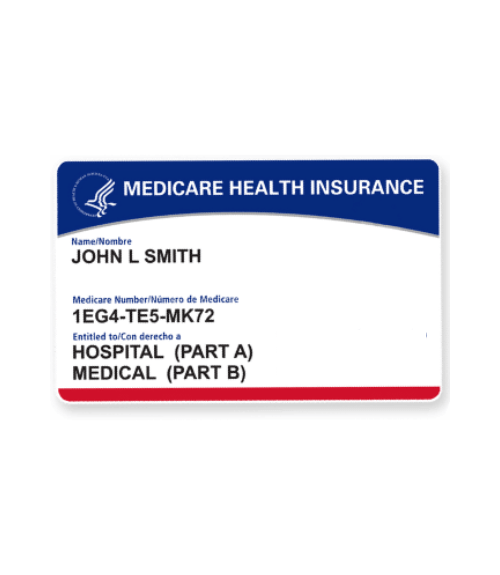Overview of Your Medicare Costs (Part 2)

When it comes to healthcare, being prepared is always a great idea. Birthday surprises are good! Medical surprises are not so good. By learning about what your costs may look like ahead of time, you will be ahead of the curve and ready when the time comes to be enrolled.
Monthly Part B Premiums
Policyholders should expert their Part B premiums to vary depending on the family’s income.
The cost of the Income Related Monthly Adjustment Amount (IRMAA) will be based on the policyholder’s modified adjusted gross income (AGI) from the tax year two years prior to enrollment.
Those who make less than $87,000 as individuals or $174,000 as part of a married couple that files jointly will not have to pay the IRMAA. Other this limit, the cost of the IRMAA continues to rise according to the policyholder’s income bracket.
Patients who fail to enroll in Part B when they become eligible can also expect to pay a 10% higher premium for each full 12-month period that the policyholder went without Part B coverage. Those who want to enroll in Part B may also have to wait until the General Enrollment Period to sign up for coverage.
Thing to know about Part B Deductibles and Coinsurance
Before reading on, please note that the costs described below apply only to policyholders who have original Medicare. Medicare Advantage Plans cover all the same services, but the costs vary by plan. Some policyholders will pay more for services and others will pay less. Deductibles also vary by plan.
The Part B deductible is a yearly deductible that usually increases every year. Once patients have met this yearly deductible, they should expect to pay 20% of the cost of covered services. The coinsurance applies to inpatient and outpatient services, DME, and therapy costs. Medicare will cover 100% of clinical laboratory services and home healthcare services.
The cost of the Income Related Monthly Adjustment Amount (IRMAA) will be based on the policyholder’s modified adjusted gross income (AGI) from the tax year two years prior to enrollment. Typically, most individuals or couples (filing jointly) people will fall into a bracket that results in them not having to pay the IRMAA adjustment amount. Please contact me and I can help you determine which bracket you are in, and if you'll have to pay the adjustment.
Patients who fail to enroll in Part B when they become eligible can also expect to pay a 10% higher premium for each full 12-month period that the policyholder went without Part B coverage. Those who want to enroll in Part B may also have to wait until the General Enrollment Period to sign up for coverage.
Home Health, Medical, and Other Services
Medicare will cover 100% of the cost of approved home healthcare services. However, patients will be responsible for paying 20% of the cost of approved durable medical equipment.
Expect to pay 20% of the cost of Medicare-approved doctor services, including most inpatient services. Policyholders will also be responsible for 20% of outpatient therapy costs and 20% of durable medical equipment costs.
Outpatient Mental Health Services
Medicare Part B policyholders will pay nothing out-of-pocket for yearly depression screenings. They will, however, have to pay 20% of the cost of all visits to doctors or other care providers for diagnosis or treatment of depression or other mental health conditions should they choose to pursue it. Patients who receive services in hospital outpatient settings should also expect to make additional copayments or provide comparable coinsurance.
Partial Hospitalization for Mental Health Services
Part B policyholders should expect to pay for 20% off the care they receive from doctors and other providers in outpatient hospital settings. They may have to pay more for care received in a hospital that could have been provided in a doctor’s office. Policyholders who receive outpatient services in hospitals should note that the copayments for these services are capped at the inpatient deductible amount.
It’s also important to note that most patients will have to pay not just the doctor’s copayment but also the hospital’s copayment. Some preventative services don’t have copayments, in which case this is not applicable. When there is a copayment, it cannot be more than the hospital stay deductible for the same service as covered by Part A.
The Part B deductible also applies to all hospital outpatient services, with the exception of non-qualifying preventative services. Those who receive care in a critical access hospital should expect their copayments to be higher. They should also note that the cost is not capped and can exceed the cost of receiving comparable services during an inpatient hospital stay as covered by Part A.
Your Part C/ Part D Costs
There is a lot of variation in Part C premiums, deductibles, copayments, and coinsurance rates. Those interested in switching to a new Medicare Part C plan should compare the costs for each plan individually.
Medicare Part D covers prescription drugs, in particular. As with Part C, costs vary substantially depending on the plan. Higher-income policyholders should expect to pay income-related monthly adjustments to their plan premiums.
If Medicare-eligible patients go without prescription drug coverage for more than 62 consecutive days after the initial enrollment period without coverage, they may be subject to a late enrollment penalty. Expect to pay this penalty for the duration of the plan. The penalty will be based on the length of time patients went without either Part D or other credible prescription drug coverage. Those with Medicare Advantage Plans or other credible prescription drug coverage will not be charged a late enrollment penalty to enroll in Part D.
Each Part D plan has different deductibles, copayments, and coinsurance costs. Before enrolling in Part D, it is important to get help in comparing your best options. The consequence of trying to do it all on your own is ending up on the right plan at best. At worst, you could end up on a plan that doesn’t give you the coverage you need.
I hope this article helped you. This was just an overview of Medicare costs and should not be taken as a rule – your costs will likely be different. The goal is for you to be informed of what your expenses may look like, so you can prevent any surprises when it comes to Medicare.
If you have any questions about your costs that you would like me to answer, please get in contact with me through whichever means you prefer (phone call, text message, or email.)




